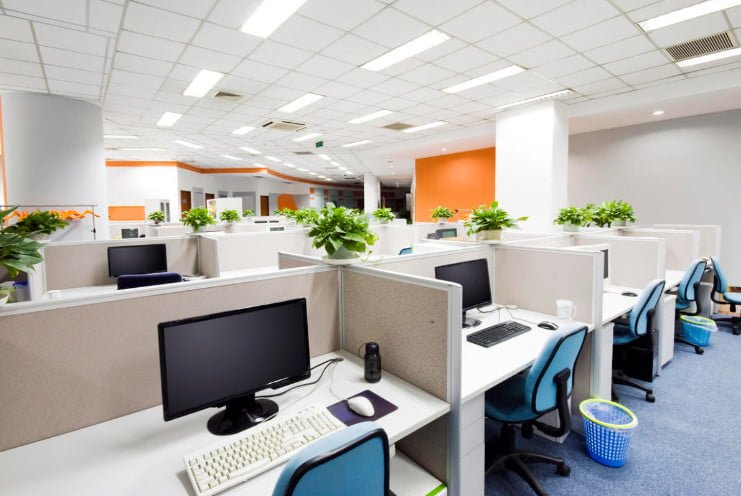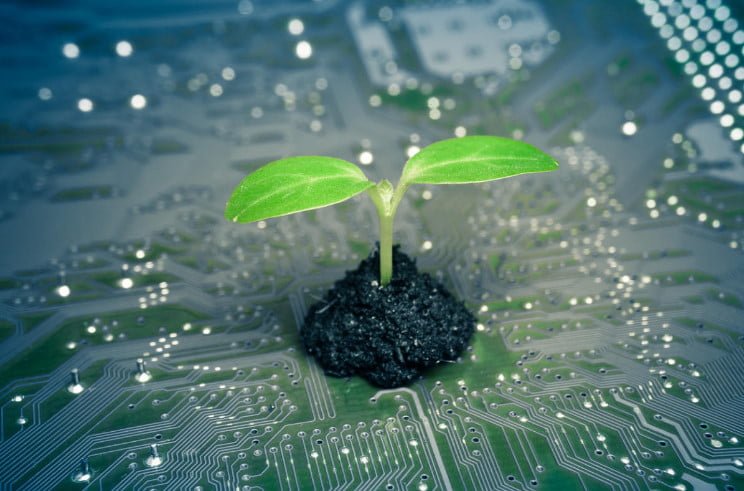
New technologies are increasingly penetrating our lives. Is it good or bad? On the one hand, of course, it’s good. About twenty years ago, the general public had no idea about the Internet. And today, even great-grandmothers easily communicate with their great-grandchildren via Skype, and almost everyone has some gadget in their pocket, on their desktop or in their bag, and often more than one.
From the very beginning of the appearance of the computer in our lives, messages about the dangers of radiation, electromagnetic radiation and other computer effects on human health regularly appear. In many cases, scientists cannot say with certainty whether this harm actually exists or not. Scientists can’t, so children have taken up the task.
Plants on the desktop: will they protect you from harmful radiation?
Probably everyone has ever heard that the harmful radiation of a computer, in particular a monitor, can be neutralized or at least reduced by putting a pot with a houseplant next to it. And, according to some, the most effective plant for this purpose is the cactus.

The monitor does not emit any radiation in the conventional sense, there is only X-ray radiation. And as for electromagnetic radiation – it is really present and affects living organisms. To make sure of this, you can repeat the experience conducted by the students.
Perhaps we all remember the school experiments at the botany lesson with the germination of bean seeds. Modern students are also sprouting. Only unlike us, our children were able to expand the conditions of the experiment.
A 5th grade student in his research work, studying the effect of computer radiation on the growth and development of plants, compared the development of two leguminous plants – a control growing indoors and an experimental one placed near a computer.

During the experiment, the boy found out that at the initial stage of development, computer exposure is even useful for the plant: near the computer, the bean seed rose a day earlier. And during the first week, the “computer” sprout developed faster. However, then the plant in the computer class slowed down its growth and began to lag behind the control.
The difference in the rate of plant development can be assessed personally – it is clearly visible in the photos. Obviously, if a computer has such an effect on beans, then on more developed organisms – for example, on the computer user himself, electromagnetic radiation also does not work in the best way.

Everyone can draw conclusions from student research independently: for example, you can either minimize your own stay next to the computer, or use radiation to germinate seeds – in fact, the acceleration of bean germination next to the monitor has been experimentally proven. But there is no scientific evidence that plants on the desktop reduce the harm from radiation by taking some of it on themselves.
Wi-Fi and plants
A similar experiment was conducted by Danish high school students. However, they tried to assess the effect of Wi-Fi on plants by growing watercress seeds in a room with a Wi-Fi zone and in a room without wireless Internet access. As in the previous experiment, the affected plants grew worse. Moreover, in the room with the router, the Danish watercress did not rise at all, unlike the fact that it grew under normal conditions.

It is unclear whether the radio waves on which Wi-Fi is based had such an effect, or whether it is the same negative effect of electromagnetic radiation. But what is clear is that it is worth reducing the time spent at the computer. And not only because of the danger of scoliosis and increased strain on vision.




Leave a Reply